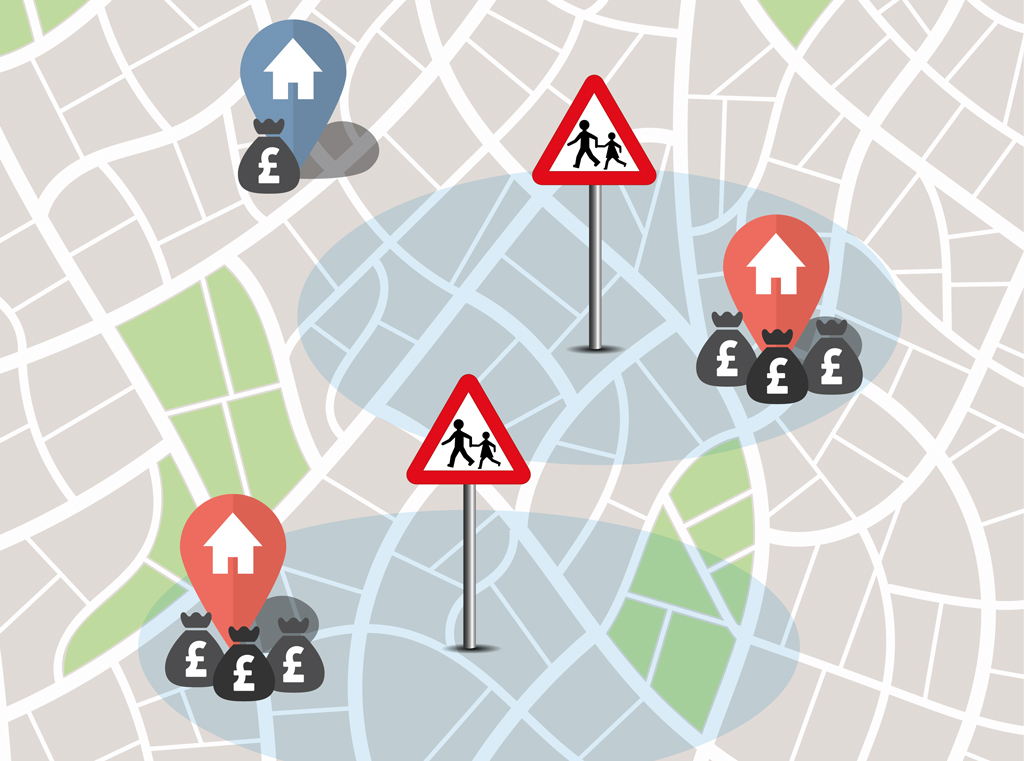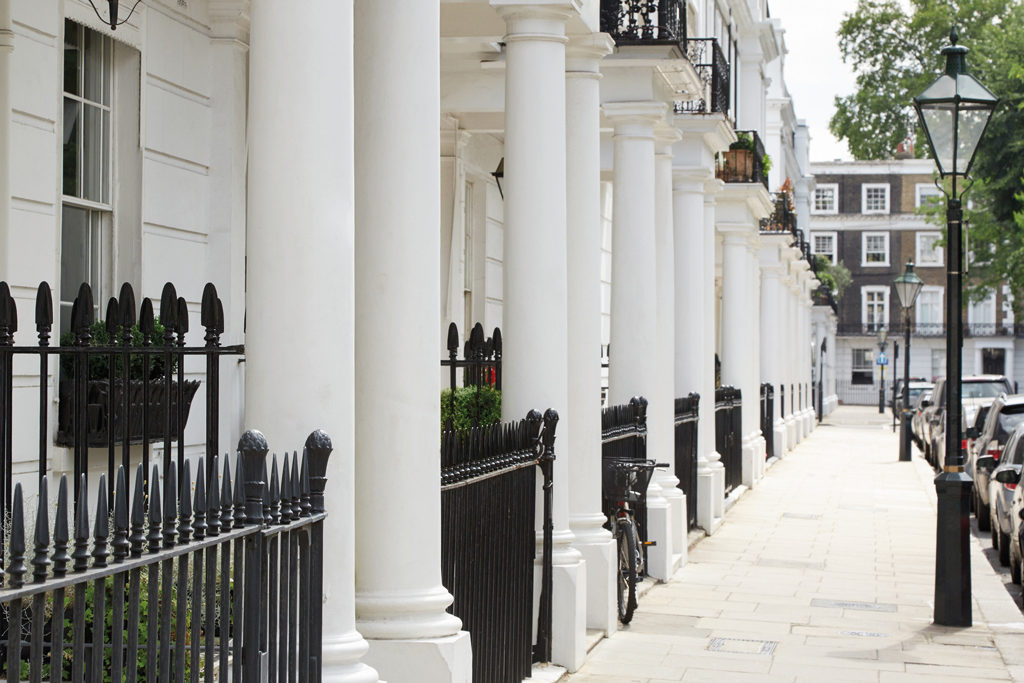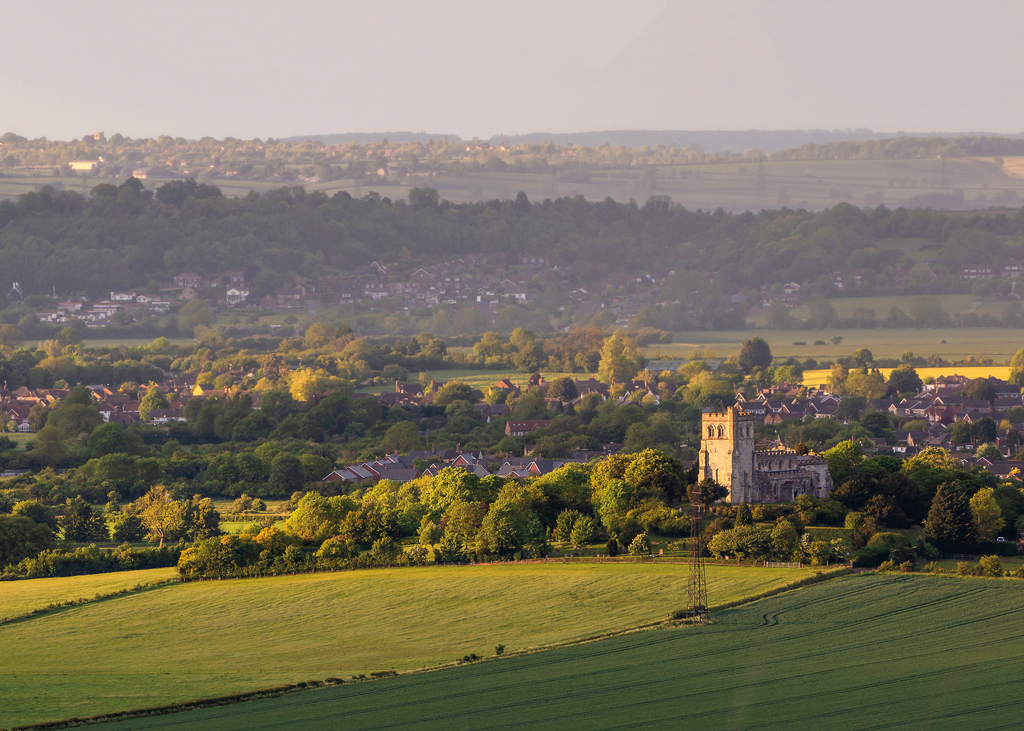School Catchment Areas
By
5 years ago

Hidden Costs
The price of living in an outstanding state school catchment area is higher than you think, says property editor, Anna Tyzack. Learn what you need to know about school catchment areas here.

(Getty Images)
With average private school fees now more than £17,000 per year, and rising to over £40,000, it makes more financial sense than ever to consider the option of an outstanding state primary school over a fee-paying pre-prep, especially if you have a large family.
If you live near to a good secondary grammar or academy, you might consider putting your children into the state system for at least a part of their school career. ‘An increasing number of families are staying in the state system until their child is at least eight,’ explains Tom Hudson of property finders Middleton Advisors. ‘When it works, there is nothing better.’
The problem is though, that only 19 per cent of primary schools across England are rated as ‘outstanding’, and in the East Midlands this figure falls to 15 per cent. Families living in London are more likely to live near a good primary as 28 per cent are ‘outstanding’, with 54 per cent of the primaries in Kensington and Chelsea gaining top marks from Ofsted. Parents, however, will find themselves paying a considerable premium in property prices to do so, so they need to do their sums. It might make more financial sense if you have multiple children but don’t be easily beguiled if you only have one or two.

(Getty Images)
‘Many families will pay over the odds to be within walking distance or within the catchment area of the country’s highest regarded state schools,’ explains Frances Clacy of Savills Research, whose recent figures suggest that the average price of a home near an Ofsted ‘outstanding’ primary school is £61,000 higher than one rated ‘requires improvement’.
‘Given the inflated prices of family houses in Kensington and Chelsea and other London primary school hotspots, such as Battersea and Richmond, there is a mass exodus to primary school hotspots in the countryside, where house prices are cheaper,’ says Hudson. According to Savills Research, one in five children born in London will move out of the capital by their fifth birthday, with primary education being the main driving force behind this migration.
The Bourne valley in Hampshire is, according to Hudson, ‘an increasingly popular primary school hotspot, as there are good schools in almost all of the villages,’ he explains. Other primary school hotspots, according to Savills’ research, include Epsom and Ewell and Trafford, along with East Dorset, which not only has the highest proportion of outstanding primary schools – 60 per cent – but also the advantage of having no schools that are considered ‘inadequate’ or ‘requires improvement’.
‘As competition for school places is only getting fiercer, parents need to be more savvy and look to areas with a high concentration of excellent schools, instead of pinning their hopes on just one,’ explains Clacy.

(Getty Images)
‘Unfortunately, primary school hotspots are not necessarily as good for secondary schools, which means some families end up moving again when their child turns 11,’ says Hudson, ‘or opting for the fee-paying route. The secondary school hotspots tend to be towns,’ he explains. ‘Newbury has excellent secondary schools, as does Winchester.’
In London, Barnet is highly regarded for both its primary and secondary schools – the Henrietta Barnet School, Queen Elizabeth’s school and St Michael’s Catholic Grammar School are all highly rated, as is Twickenham, where 70 per cent of the pupils at Waldegrave School achieve grade five in English and maths; while in St Albans in Hertfordshire, 38 per cent of pupils attend high performing state secondary schools and there are also a number of Ofsted outstanding primary schools. Tunbridge Wells is another education hotspot, with five outstanding state primaries and five secondary schools, along with four independent schools. (There are fast trains into London in 41 minutes and a five-bedroom house with a large garden costs around £1.2 million, according to Robert Jacobs, Head of Savills Tunbridge Wells.)
Somewhat surprisingly, Oxford and Cambridge, where average house prices are some of the highest in the country (up to £200,000 higher than those in St Albans), the state secondary school offering is underwhelming, with just one high performing state school each, and more than a dozen private schools.
As private education becomes increasingly unattainable for families, Hudson expects house price premiums in all-round education hotspots to rise even higher. ‘The cost is high,’ he concedes, ‘but still well below that of putting multiple children through private school.’
This article was originally published in School House Magazine AW19. Read more from Anna Tyzack here.



